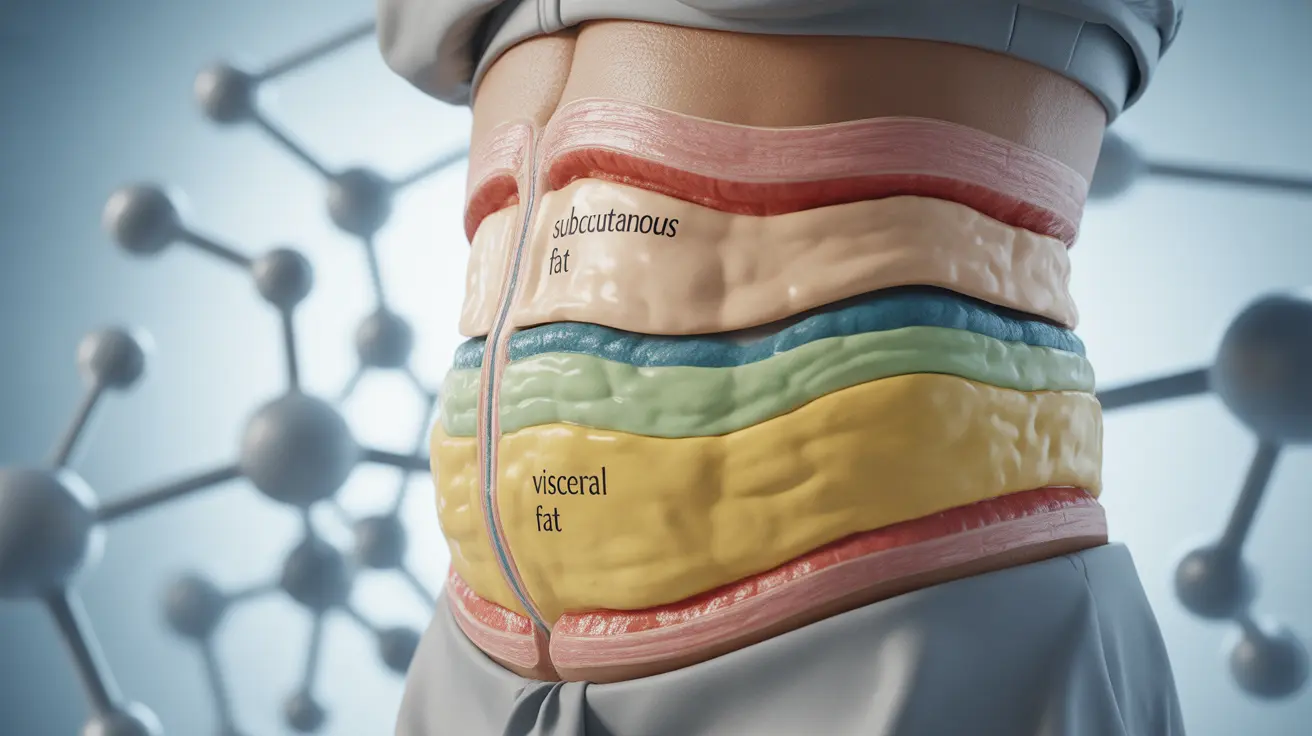When it comes to belly fat, not all types are created equal. Understanding the different types of belly fat is crucial for managing your health effectively and reducing your risk of various diseases. Two primary types of belly fat affect our bodies in distinctly different ways: subcutaneous fat and visceral fat.
In this comprehensive guide, we'll explore the key differences between these types of belly fat, their health implications, and effective strategies for managing them. This knowledge is essential for making informed decisions about your health and fitness journey.
The Two Main Types of Belly Fat
Understanding the fundamental differences between subcutaneous and visceral fat is crucial for addressing belly fat concerns effectively:
Subcutaneous Fat
This is the soft, pinchable fat that lies directly under your skin. While it may affect your appearance, it's generally less harmful to your health than visceral fat. Subcutaneous fat acts as:
- An energy reserve
- Insulation for body temperature
- Protection for muscles and bones
- A natural part of body composition
Visceral Fat
Located deep within your abdominal cavity, visceral fat surrounds your vital organs. This type of fat is more metabolically active and can have serious health implications:
- Produces inflammatory substances
- Affects hormone function
- Increases insulin resistance
- Impacts vital organ function
Health Implications of Different Fat Types
The location and composition of belly fat significantly influence its impact on your health:
Visceral Fat Health Risks
Excess visceral fat is associated with several serious health conditions:
- Type 2 diabetes
- Cardiovascular disease
- High blood pressure
- Certain types of cancer
- Metabolic syndrome
Subcutaneous Fat Considerations
While generally less dangerous, excessive subcutaneous fat can still contribute to:
- Joint stress
- Reduced mobility
- Skin-related issues
- General discomfort
Measuring and Identifying Fat Types
Several methods can help determine the types and amounts of belly fat you're carrying:
- Waist circumference measurement
- Waist-to-hip ratio
- Body composition scans
- Medical imaging techniques
Effective Strategies for Fat Reduction
Targeting belly fat requires a comprehensive approach:
Lifestyle Modifications
- Regular aerobic exercise
- Strength training
- Adequate sleep
- Stress management
Dietary Approaches
Focus on:
- Whole, unprocessed foods
- Lean proteins
- Fiber-rich vegetables
- Healthy fats
- Portion control
Frequently Asked Questions
What are the main differences between subcutaneous and visceral belly fat?
Subcutaneous fat is the soft, pinchable fat directly under your skin, while visceral fat is located deep in your abdomen, surrounding your organs. Visceral fat is more metabolically active and poses greater health risks than subcutaneous fat.
How does visceral fat increase the risk of chronic diseases compared to subcutaneous fat?
Visceral fat releases inflammatory substances and hormones that directly affect nearby organs, increasing insulin resistance and inflammation throughout the body. This can lead to various chronic diseases, including diabetes, heart disease, and certain cancers.
What are the most effective ways to reduce harmful visceral belly fat?
The most effective approaches include regular aerobic exercise, strength training, maintaining a balanced diet rich in whole foods, getting adequate sleep, and managing stress levels. Consistency in these lifestyle changes is key to reducing visceral fat.
How can I tell if I have dangerous levels of visceral fat versus subcutaneous fat?
While you can't directly see visceral fat, indicators include a large waist circumference (especially if you have a "hard" belly), high waist-to-hip ratio, and elevated blood markers for inflammation and metabolic health. Medical imaging can provide definitive measurements.
Why is visceral fat considered more dangerous than the fat just under the skin?
Visceral fat is more dangerous because it's metabolically active, releasing harmful substances that directly affect vital organs. It can disrupt hormone balance, increase inflammation, and contribute to insulin resistance, making it a significant risk factor for serious health conditions.




